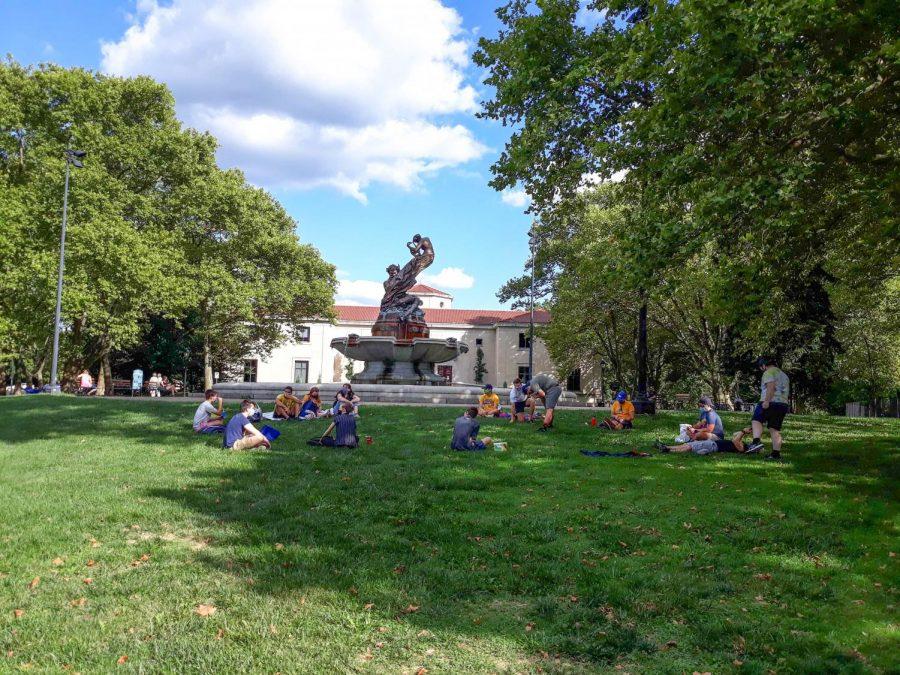Opinion | We really need to get outside
June 15, 2021
Never underestimate the power of nature.
I grew up immersed in the outdoors. My parents didn’t let me have a cell phone until I was nearly 15 years old, which of course my emo phase self wasn’t too pleased about. Video games were and still are relatively foreign to me. I have never seen SpongeBob or Scooby-Doo, and the only time I was exposed to Nickelodeon or Disney Channel was when I slept over at a friend’s house. My dad has always loved camping, kayaking, hiking and backpacking, and was determined to share that love with my mom, brother and I. He sure did.
During the COVID-19 pandemic, most people gravitated towards staying inside their own homes and not doing much else. People with mental illness gravitate towards the indoors as well, and stressed college students spend most of their study time indoors. Since the increase in the use of screened technology as of 30 or so years ago, the collective amount of time people spend in nature has dropped drastically, and connections to nature are weaker and weaker.
Long, uninterrupted amounts of time spent indoors without access to nature impacts both physical and mental health. Don’t take my word for it — you all know what happened to Dick Halloran in Stephen King’s “The Shining.” Yeah, sure, supernatural elements played a role, but they aren’t so far off from the actual impacts of lack of access to the outside world. It has long been recognized that human beings have an innate evolutionary connection to nature.
Because of this, going outside and into nature frequently and consistently is essential to maintain a healthy lifestyle, and can drastically improve quality of life. Among many other things, it reduces stress, decreases blood pressure, improves cognitive function, can decrease the symptoms of mental illness, improves mood and immune system health and helps to regulate bodily cycles to become healthier, such as your sleep schedule. The steady increase in the collective stress levels and rates of mental illness in America as well as the COVID-19 pandemic only reinforce the fact that we all desperately need to go outside.
The COVID-19 pandemic and my going to college put the near weekly traveling to remote spots in nature on hold. Gone were the days of wandering between old-growth hemlocks in search of elk to photograph and the nights of sitting under a meteor shower. The size and span of my world — which had previously included the entirety of the East Coast reaching all the way to northern Ontario and was soon to include the American Southwest — was suddenly reduced to the small and nearly suffocating bubble of Pittsburgh. The small group of neighborhoods that I could walk to became my new world. And for a few months, I fell into what most other people fell into during the beginning of the pandemic — a deep depression in which I didn’t leave the house, barely spoke to the people I cared about and let my academics slip.
I started going outside again as much as I could after about four months of misery. I’d accepted that the pandemic wasn’t going to end any time soon and there was no point in hiding inside. I am lucky enough to live a short walk from both Frick and Schenley Parks, both places I had come to think were overrated and not worth going to after my time spent in state parks and national forests all across the country. After months of walking in both parks, especially Frick almost every day, my quality of life has improved greatly, despite still, for the most part, participating in pandemic living. That is not a coincidence.
During the pandemic, Iceland found somewhat of a solution to the loneliness that people were experiencing — to hug trees! Shinrin-yoku is a Japanese practice that translates to “forest bathing,” or the act of immersing oneself into the woods in order to improve physical well-being, alleviate symptoms from mental illness and reduce stress. Many other countries have adopted similar practices, including several Scandinavian countries.
Beginning to go outside again after more than a year spent predominantly indoors will be difficult for many. After all, it’s a habit now to want to stay in. It’s important to remember to start slow, but to stick with it. Easy, simple things to do include eating a meal outside or walking in your local park. Studying and reading outside have become two of my favorite pastimes and I have come to recognize that if I’m in a bad mood, the first step to feeling better is to go outside.
Dalia Maeroff writes primarily about issues of psychology, education, culture and environmentalism. Write to her at DAM291@pitt.edu.




